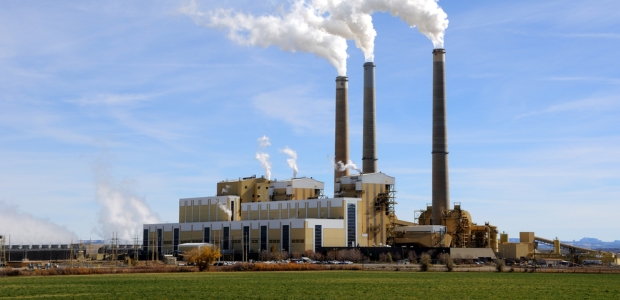
Regulation of Carbon Emissions for Existing Power Plants Under the Clean Air Act
Will EPA finally propose regulations that significantly reduce carbon emissions from existing coal-fired power plants?
- By Kevin Jones, Mychal Ozaeta
- Dec 25, 2013
While the Environmental Protection Agency's recently proposed emissions standards for new power plants were controversial, the debate over how to limit the greenhouse gas (GHG) emissions of the largest source in the country, existing fossil-fueled power plants, is of much greater consequence.
Carbon dioxide (CO2) constituted 84 percent of GHG emissions in 2011. The electric power industry accounted for 33 percent of these GHG emissions, with coal plants leading the way as the worst source of this pollution.
While there has been industry backlash over the recently proposed standards of performance for new power plants, the "Holy Grail" to reducing carbon emissions rests with existing coal-fired power plants. EPA's 2013 power plant rule was just the first step in President Obama's plan to act on "Power Sector Carbon Pollution Standards" and ultimately culminates in EPA-proposed standards for existing power plants in June 2014.
While the scientific imperative and legal authority to act are clear, there is much less known about EPA's plan for existing power plants. Section 111(d) is a seldom-used statutory backstop through which EPA is empowered to issue standards of performance that the states then implement through EPA-approved plans. Traditionally, EPA has based its standards of performance on the best system of emissions reductions, but for existing fossil-fueled generation, the unit-specific alternatives are extremely limited when it comes to reducing CO2 emissions. Some believe that EPA will base its standard on generation efficiency improvements, but this could pose challenges for a large number of units. While industry is often in favor of flexible compliance mechanisms, there is some industry fear that flexibility in compliance could lead to EPA adopting a more stringent standard.
Although EPA's proposed standards for new power plants embrace the flexible compliance approach by allowing new sources to phase in the use of clean energy technologies, the plan for existing power plants is uncertain. The Natural Resources Defense Council has proposed to cut existing power plant emissions from 2005 levels by 26 percent in 2020 and by 34 percent by 2025. The NRDC plan would have EPA set state-specific emissions rates based on the individual percentage of coal- versus gas-fueled generation. The states would then have broad flexibility in meeting the standards through a range of technologies, as well as the ability to invest in new renewables or energy efficiency to earn and trade credits toward compliance. The NRDC proposal would facilitate alternative compliance approaches, such as the cap and trade regimes already in place in the Northeast and California, as long as those approaches achieve equal or lower emissions.
Various industry groups have criticized the NRDC plan. For example, the National Climate Coalition, which includes electric generation companies and other industrial giants, has embraced an approach that sets separate performance standards for coal- and gas-fired power plants but allows the utilities to calculate average emissions across their facilities. The states would have the ability to use market-based mechanisms in achieving overall compliance. Whether EPA chooses one of those two approaches or something completely different, the Obama administration has set EPA on a path to finally reduce carbon emissions from existing coal plants. The country can only hope that some combination of market and regulatory forces will end the decades-long reign of king coal as the dominant source of carbon pollution.
About the Authors
Professor Kevin Jones is the deputy director and senior fellow for Energy Technology and Policy at Vermont Law School's Institute for Energy and the Environment. He is the Smart Grid project leader at the institute. Seeking solutions to the energy and environmental policy challenges facing the electric power industry has been the focus of his career. He has been at the center of the transformation of the electric power industry in the Northeast as the director of power market policy for the Long Island Power Authority (LIPA) and as the former director of energy policy for the city of New York. LIPA is one of the largest municipal utilities in the country and is a leader in energy conservation and alternative energy technologies. While at LIPA, he collaborated on energy policy with both the Large Public Power Council and the New York Transmission Owners. He has also consulted on energy issues as an associate director with Navigant Consulting and Resource Management International. He received a Ph.D. from Rensselaer Polytechnic Institute's Lally School of Management and Technology, a master's degree from the LBJ School of Public Affairs, University of Texas at Austin, and a BS degree from the University of Vermont. While at RPI, Kevin taught managing energy issues in the Environmental Management and Policy Program. His doctoral research compared the market-based approach to regulating acid rain in the United States to the command-and-control approach of the European Union.
Mychal Ozaeta, JD/MELP 2015, from Los Angeles, Calif., is a staff editor at VJEL. He graduated from the University of California, Los Angeles with a degree in political science. Upon graduation from Vermont Law School, he plans to practice environmental and energy law.